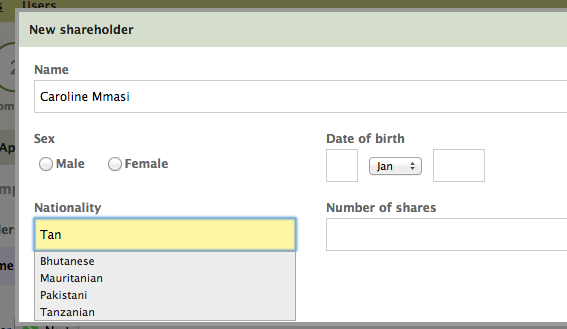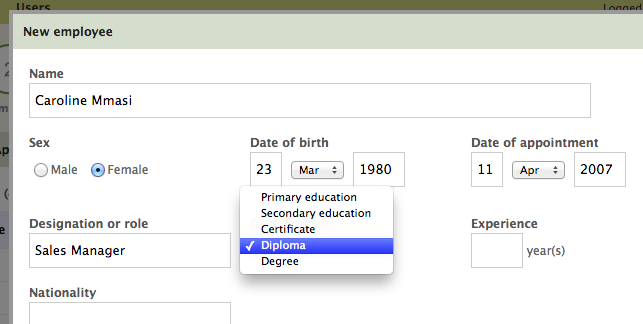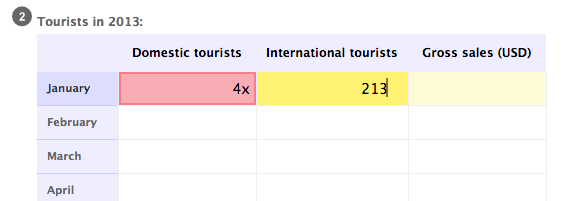Design of the TATO Online Information System part 1
In 2012 we had the pleasure of working with the Tanzania Association of Tour Operators (TATO) to develop a Tourism Information System. As an organization TATO represents the interests of tour operators in Tanzania and does this through training of its members, conducting research, and advocacy and lobbying. TATO will carry out these functions well if aided by knowledge and information that enables it to discern the industry’s economic contributions and their trend. With TATO we set out to answer some key questions that include:
- How many people are employed in the industry (by TATO members)?
- What are the education levels of people employed in the industry?
- How many tourists come to Tanzania and when?
- Where do tourists go and what do they do?
- How much in gross sales is generated?
Information systems are only a means to an end; a well designed information system can help us store and analyze data. In the process of making sense of data, information systems help us to arrive at information; information results after deductions from data.
This deduced information is still, for the most part, a means to an end. Unearthing this deducible information is often the driving motivation for developing the information system in the first place. However the true worth of this information, and the process as a whole, is only actualized when we use this information, when we turn it into knowledge to aid in decision making and planning.
Data sources
The members of TATO are the ones directly handling, directing, and caring for the experiences of tourists. As a collective group they have the answers we are looking for.
Every year all tour operators in Tanzania renew their operating license with the Tanzania Tourism Licensing Board (TTLB), formerly the Tanzania Tourism Licensing Agency (TALA). They do this by completing a paper-based form which asks some of the very questions we were asking. It was then clear what we had to do: make the process of completing the TTLB/TALA application form web-based, allowing TATO to capture raw data and the members to print out the completed form for submission.
TTLB/TALA offers two main forms; one for tour operators and agents, and another for accommodation providers (hotels, lodges, campsites). Redesigning the paper-based form as a web-based form allowed us the opportunity to rethink the layout and make additions and alterations while still in keeping with all the requirements of the paper-based forms.
Form layout
We use forms to capture data or information on a particular domain or problem. For any form to be successful, it is important for the way the domain or problem is presented (through the questions and their layout) matches the mental model of the people filling it in. People asking a lot of questions just to be able to complete a form is a telltale sign of incompatible mental models; the way the questioner has presented the problem (and inherently the way they think about it) is different from the way the respondent thinks about it.
The TTLB/TALA application form for tour operators comes in 4 main sections:
- Contact details
- Registration details and information on nature of business
- Employee particulars
- Operational information (registered vehicles, number of guests handled, and areas visited).
The application form for accommodation providers requests similar information except operational information inquires on room occupancy instead. It addition it inquires information on shareholders, which is conspicuously absent in the previous form.
In translating these 2 forms for the web, we created a funnel process with each step of the process representing a section from the paper-based form:
Step 1: Contact information
The form is broken down into separate steps for each section.

Step 2: Company information
This is covers company registration details and type of license being applied for.
Step 3: Shareholder information
We add sex/gender to requirements and standardize nationalities.

Step 4: Employees
Similar to shareholders, we add sex and standardize educational qualification.

Step 5: Tourists handled
We go for a more granular monthly breakdown (rather than just annually) and added
validations for input. E.g. the value in red is invalid.

Step 6: Survey
We supplement the data required in the TTLB/TALA form with a short survey. Among other
things the survey inquires on the number of tourists/guests and their average stay per
country of origin.

Step 7: Application download
The last step provides a PDF document download of the application formatted according to
the TTLB/TALA form.

Deployment
In addition to designing the system, we are providing TATO with system hosting and management. In using the system, each member of TATO gets their own account, which holds their TTLB/TALA applications. Each member chooses the people who have access to their account and logging into the system is done over a secure connection. Their information is stored over years of use allowing them for example in 2015 to see employees of 2012.
The system also simplifies the application process by requiring information on shareholders, employees, and vehicles only once. In successive years these details are copied over from the previous year allowing each member to only make changes that happened over the year.
Analyzing the data
In part 2 of this series we look at how we analyzed this data to answer our initial questions.